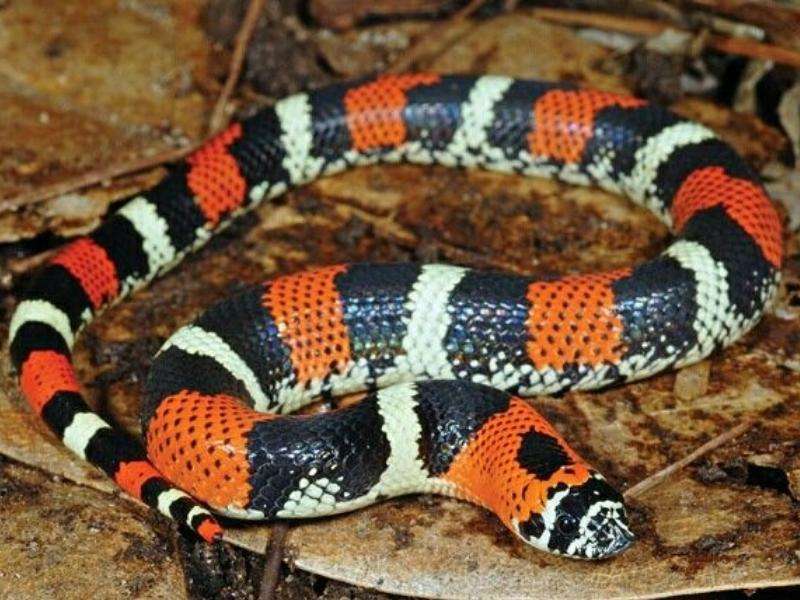
Description:
Scientific name: Xenodon pulcher
Life span: 7–8 years
The name-bearing upturned rostral scale and eye-catching banded pattern of white stripes bordered by black on a red base help you identify this snake. While they exhibit the same colors and patterns as some dangerous coral snakes, they adopt mimicry as a kind of defense. It may engage in a protective display when threatened that includes bluff strikes, neck flattening, and spastic motions akin to coral snakes. While having a reasonably stocky body form comparable to Heterodon, these snakes are often a little bit smaller and leaner. Male snakes stay smaller at 18 to 20 inches, while females can reach lengths of up to 24 inches. Both live 7-8 years, which is much less time than the majority of hognose snakes.
Native Region/Habitat
The Chaco bioregion, which includes Bolivia, Paraguay, and northern Argentina, is where X. pulcher is primarily found. Their range may include areas of southwestern Brazil and Chile. In the eastern slopes of the Andes, this area has a dry, sandy habitat characterized by dry scrubland, grasslands, and savannahs. Since their primary diet consists of amphibians, they are generally located close to streams (similar to other hognose snakes).

Behavior:
A mild and cautious snake, the tricolor hognose is more likely to hide from possible predators than to strike out. The snake isn’t often hostile, but if you handle it, it could become defensive and bite until it realizes you’re not a threat. If handled repeatedly, a snake will eventually become amiable and submissive. Tricolor hognose are solitary animals and like to live by themselves. If their surroundings don’t meet their demands or if they perceive threat, snakes become anxious.
Care As a pet/In captivity:
In captivity, care must be taken to comply with requirements.
- An enclosure that is at least 10 gallons in size, but preferably 20 gallons, is required for one adult tricolor hognose. The snake needs more horizontal than vertical room in the aquarium because it is a burrowing, terrestrial species.
- Install a basking lamp on the ceiling of the warm end of the enclosure to create this temperature gradient. To protect the snake from harm, surround the basking lamp with a guard and leave it on for 12 hours every day. Use a heat mat with an 80°F setting to keep the basking area warm overnight.
- Tricolor hognose favors humid conditions. To keep the substrate’s humidity between 60 and 65%, put a sizable, shallow water bowl in the cage and mist it once or twice a day with room-temperature water.
- Feed mice as the tricolor hognoses’ main food source. One defrosted pinky mouse should be offered to young snakes every four to five days. Feed the snakes one large mouse every one to two weeks after they are six months old.
Table





